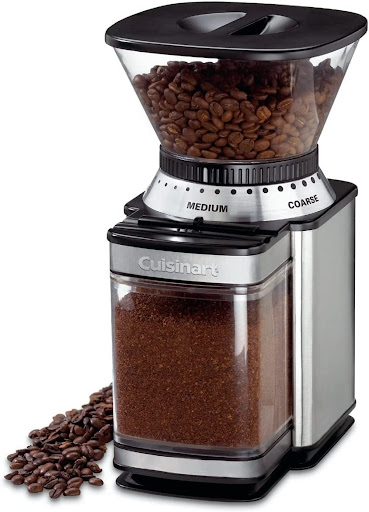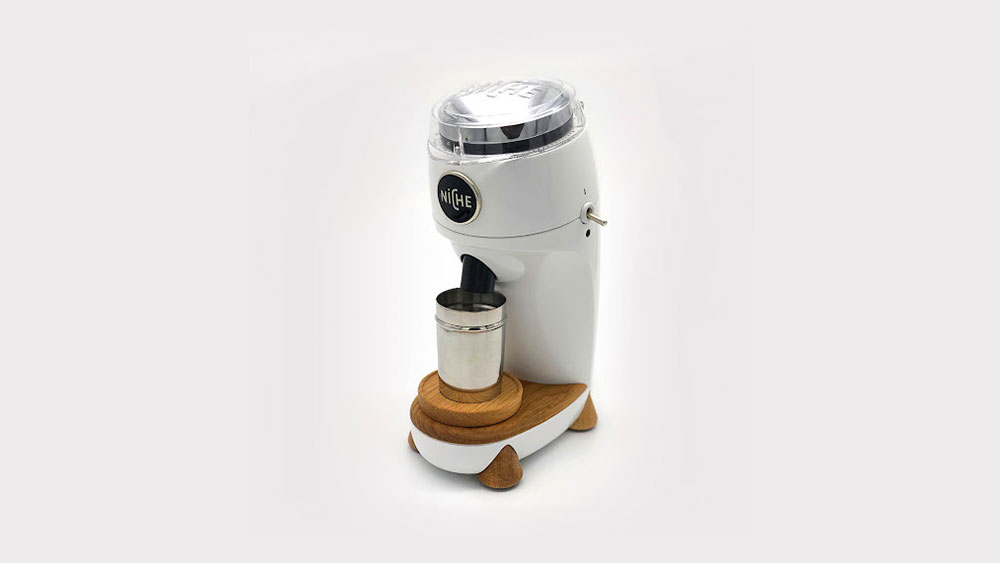Electric grinders are one of the handiest things in the world of coffee. They mean that you can easily have freshly ground coffee in your home without having to worry about making sure that you’ve finely hand-ground all of your beans, or used a nightmarish system like a mortar and pestle.
In this article, we’re going to start off by running through some things that you might want to look for in an electric grinder, and then we’re going to give you some great options that we’ve found online.

What to look for in electric grinders
Electric grinders, and non-electric ones, have a suite of different functionality and additions that can make them superb. To truly get a grinder that suits you, you might not need all of those features. Here, we’re going to talk about some handy features, and mention why you may or may not want them.
Burrs
Burrs are the part of a grinder that does the grinding. You might find it easier to think about these if you consider an old flour mill – two large, flat stones grinding against one another crush wheat into a fine powder. The same principle is used in coffee grinders – ridged pieces of metal (burrs) grind coffee beans into a fine powder, which is used to brew coffee.
There is a lot of contention about whether or not the shape and material of the burrs make a lot of difference in the process of brewing coffee. We’re really not sure either way whether it does or not, but if you’re just getting started out, there’s one thing to bear in mind: opt for burrs, not blades.
Burrs crush beans, while blades slice them. Crushing beans allows them to be reduced to more uniform sizes, which allows for greater extraction in your brew. To that end, burr grinders are certainly preferable.
Functional buttons
This might sound a little odd when you consider electric grinders, but consider the buttons on the grinders themselves. They should be fully functional and easy to use – a grinder can be a dangerous piece of equipment if something goes wrong, so make sure that the buttons themselves are straightforward and functional.
Generally speaking, we would recommend a grinder that has a very understandable type of switch. Whether it’s flat plastic like a lightswitch or a metal stick to be flipped up and down, an understandable, basic switch will work wonderfully when compared to more complex, difficult-to-use alternative options.
Step adjustment
Step-adjusting grinders are the counterpoint to fluid-adjusting grinders. Essentially, what that means is this – when you adjust how fine the grounds that your grinder produces are, the mechanism can either flow smoothly to increase or decrease the distance between burrs, or it can do it in incremental steps.
Some people prefer a stepped grinder, as it will allow them to select a point on the grinder, and consider it to be their default for a certain coffee or brewing method. For example, coffee ground at a ‘14’ on a certain grinder should come out at consistently the right size. This will allow someone to predictably make great coffee.
Other people prefer a non-stepped grinder, as a fluid adjustment of grind size can allow for finer control of the grind that you’re creating. For example, say the movement between two steps on a stepped grinder is a millimeter, but you want to be precisely halfway between two steps. In that situation, you wouldn’t be able to do that with a stepped grinder. With a stepless grinder, though, you can adjust the exact distance between the burrs to a very precise degree. A degree that, some would argue, is a little too precise.
The difference is really quite subjective, and only you can decide which you might prefer in your home, and for your brewing style.
Some great options
Baratza Encore

The Baratza Encore is generally considered to be the best entry-level grinder in the business. This might seem a little strange when you consider the $135 price tag, but grinders can certainly get much more expensive than that.
On a very simple level, something that we really love about this grinder is that the build quality is excellent. From the button on the front to the bear hopper, on-off button, and pull-out drawer, every element of the grinder is designed and built well, in order to ensure that the build quality is as good as possible.
We also really like that the encore has a small footprint. This simply means that it won’t take up very much space on your counter, and can be easily squeezed in among different pieces of equipment or decorative items that you might have on hand.
The burrs within the encore are also impressive – they’re commercial-grade burrs that are sure to last for an awfully long time in a home environment, allowing you to keep on grinding coffee well no matter what else life might throw your way.
Cuisinart DBM – 8

This cuisinart grinder clocks in at a much more acceptable price – around $60, depending upon when you buy it, and what offers might be available. The thing that makes the Cuisinart stand out at that price tag is that the bean hopper and grind chamber are totally removable. This means that you can keep the hefty grinding mechanism in one place and allow it to simply sit and serve your family, while removing other components to be sure that you can best supply coffee to the grinder and, in turn, to your family.
One downside to this grinder is that it only has eighteen grind settings, compared to the forty or the Baratza encore. At the end of the day, you may well not notice this difference, but it is a difference worth considering if you’re going to be brewing many different styles of coffee, each of which might require a different grind size.
Conclusion
Electric grinders can be something complex and difficult to totally understand. However, there’s certainly no shame in that – we all start somewhere! We hope that this article has given you a little insight into the world of electric coffee grinders, and knowing how best to use them in your home.

